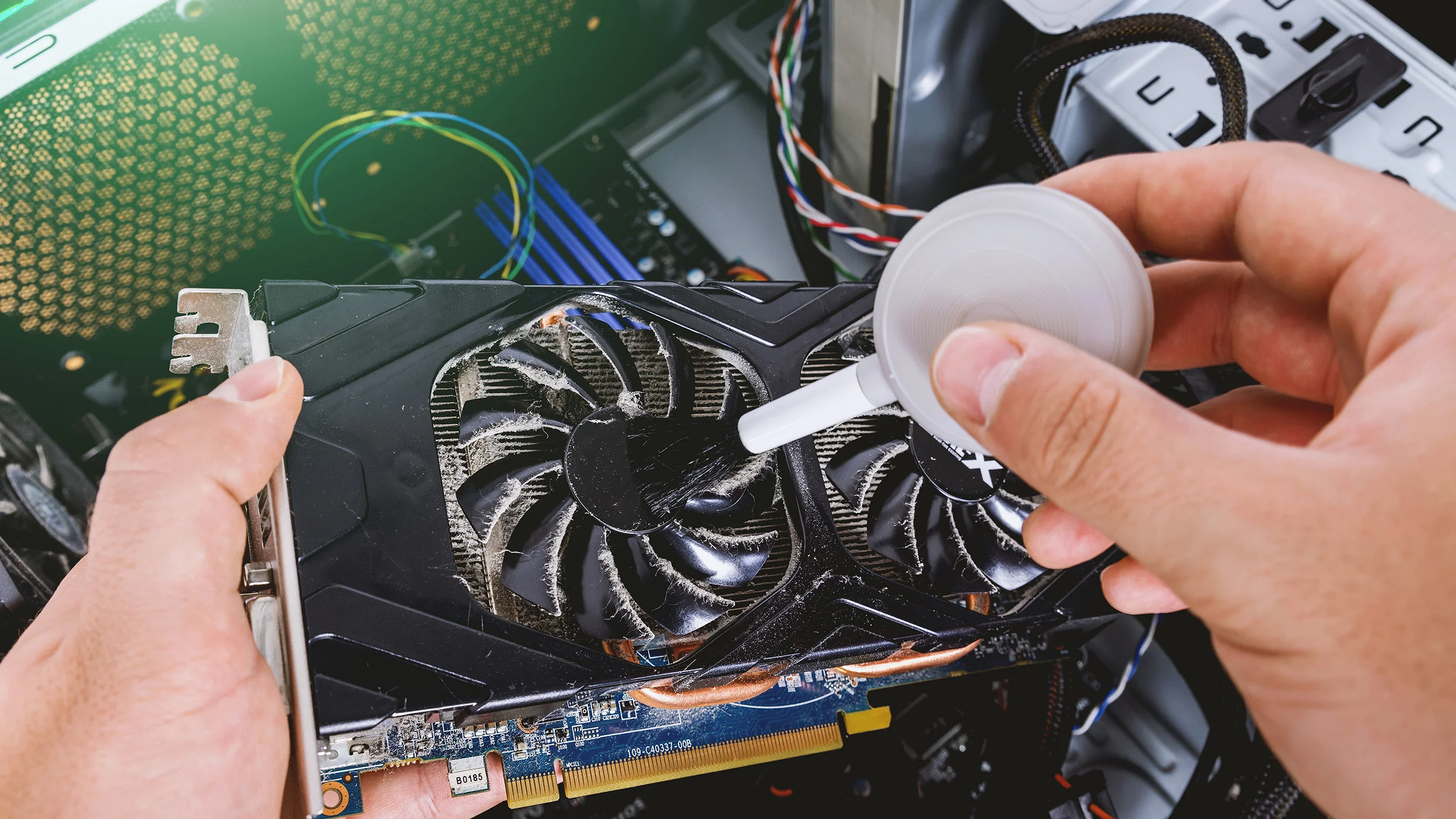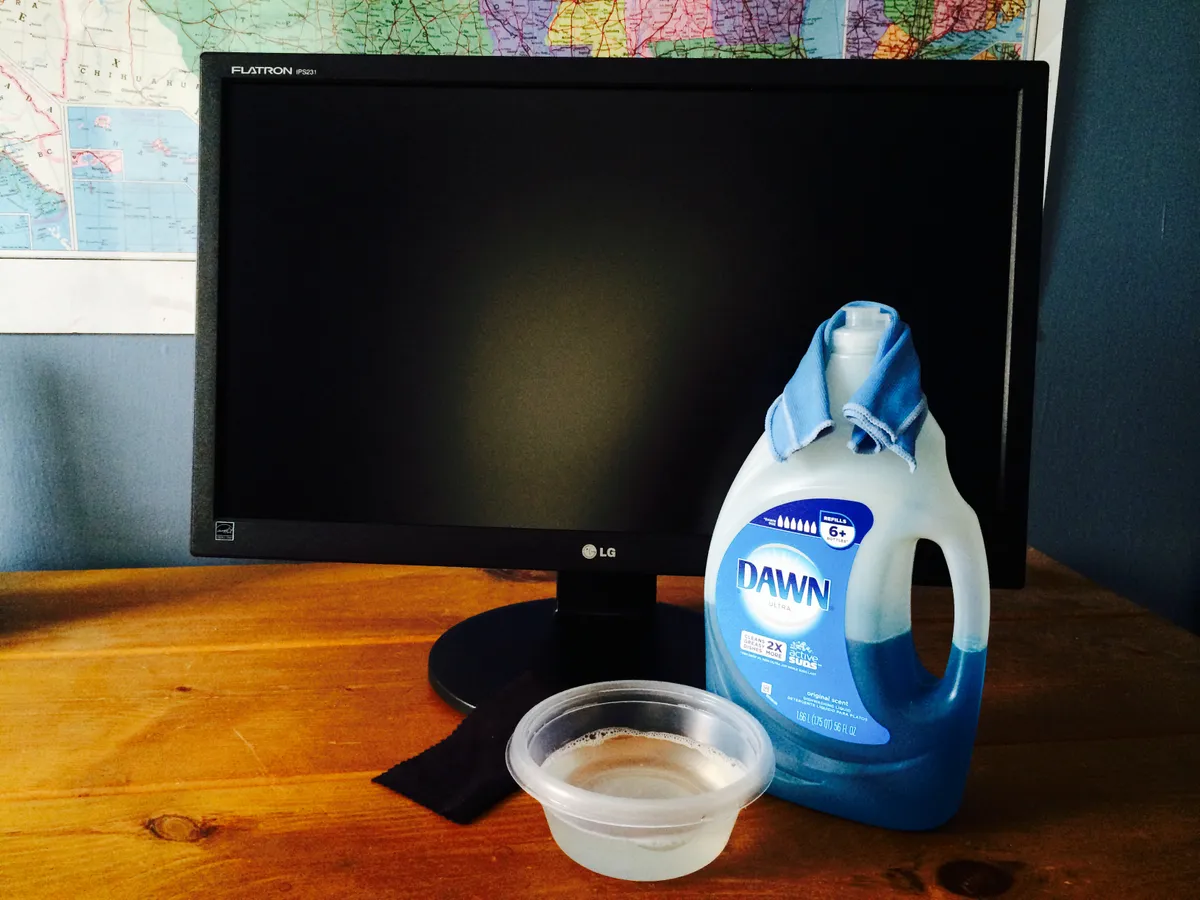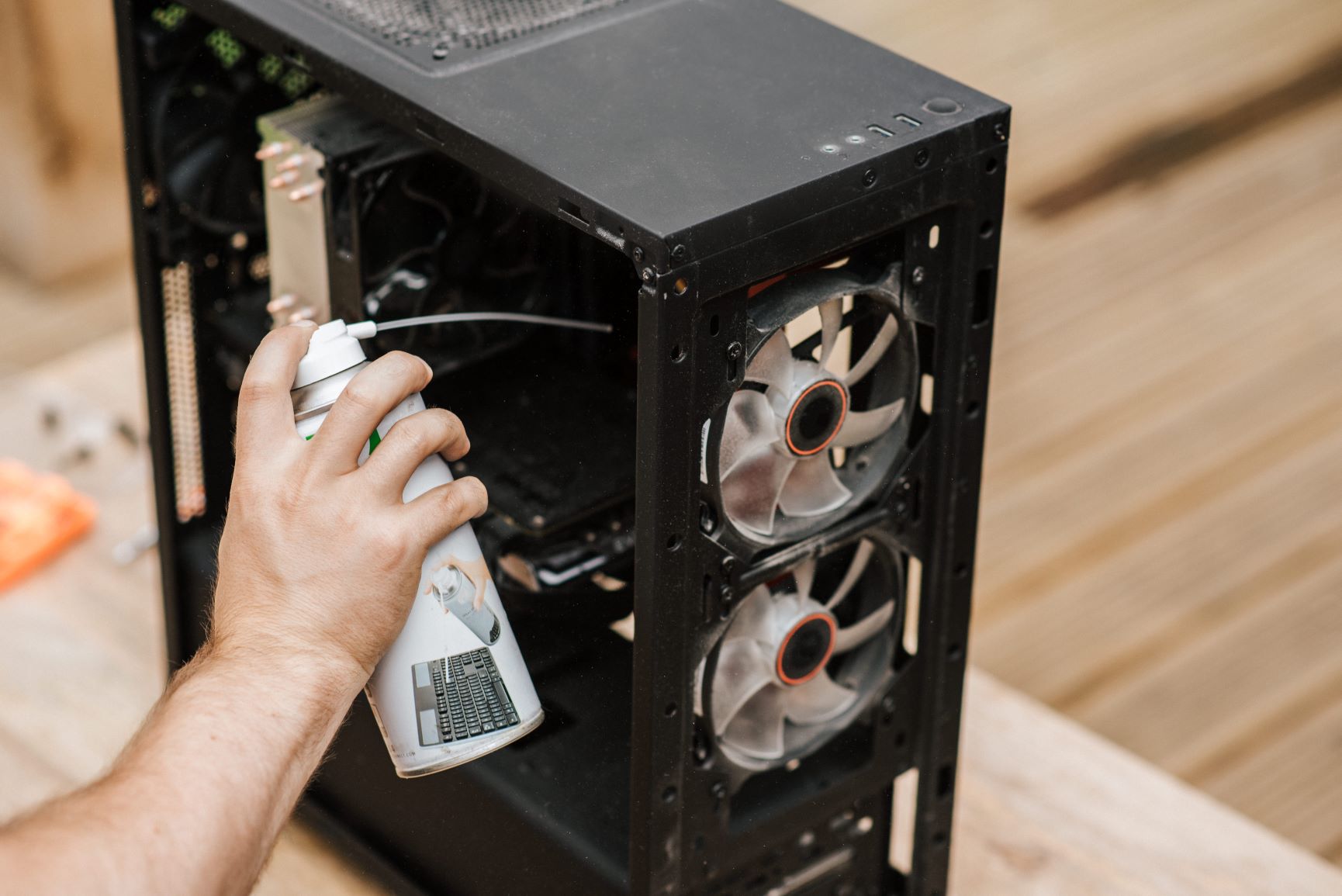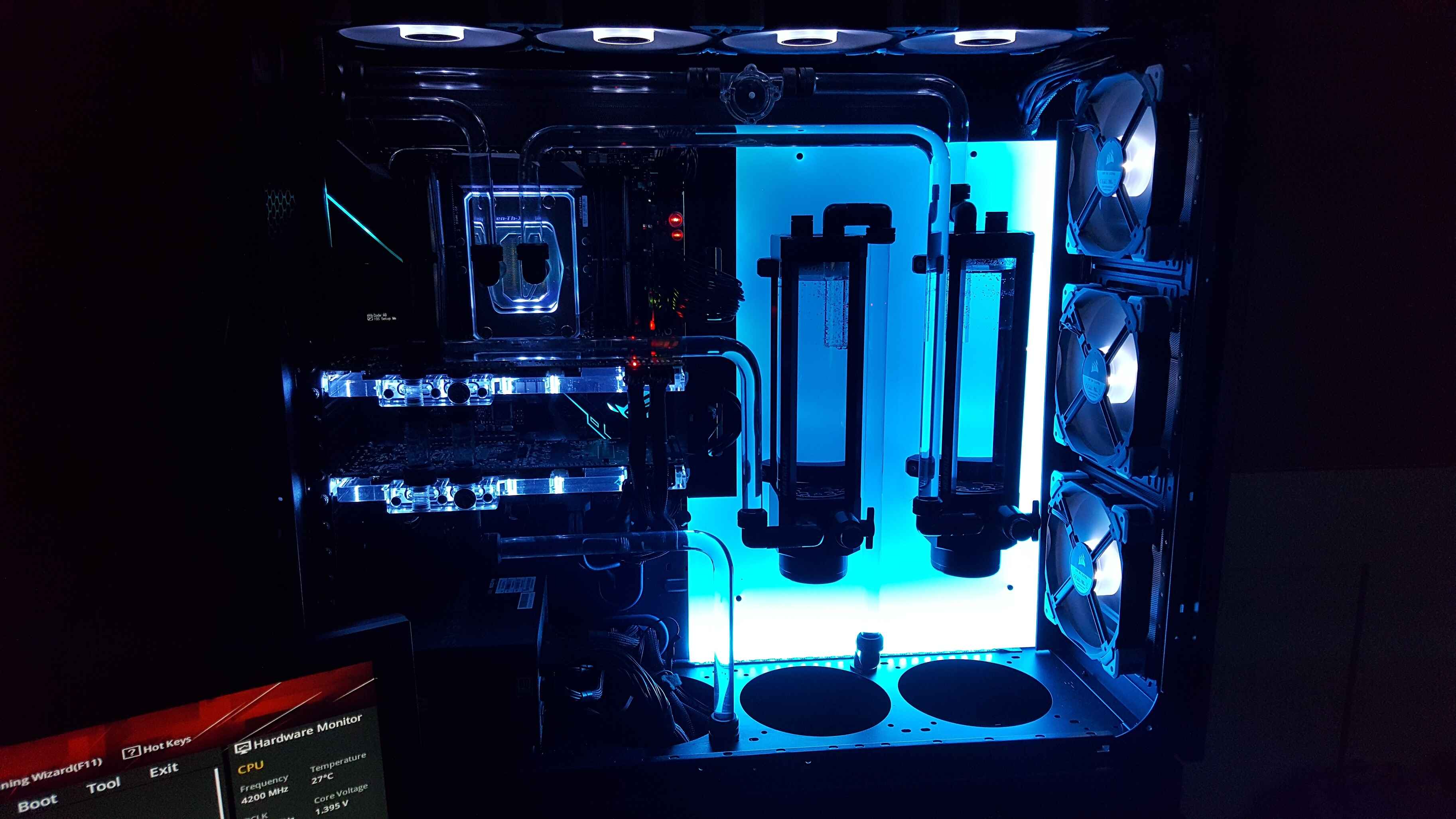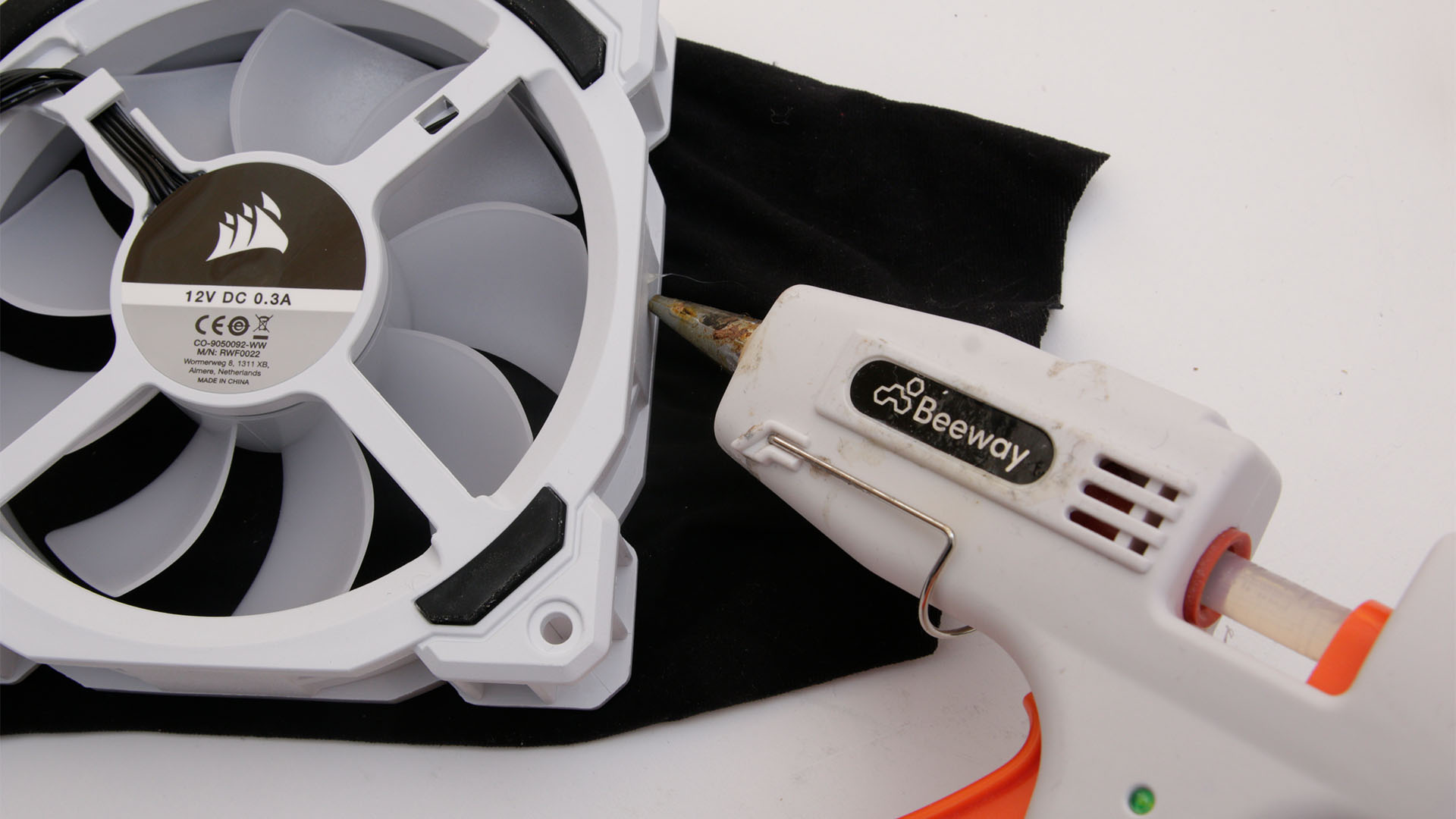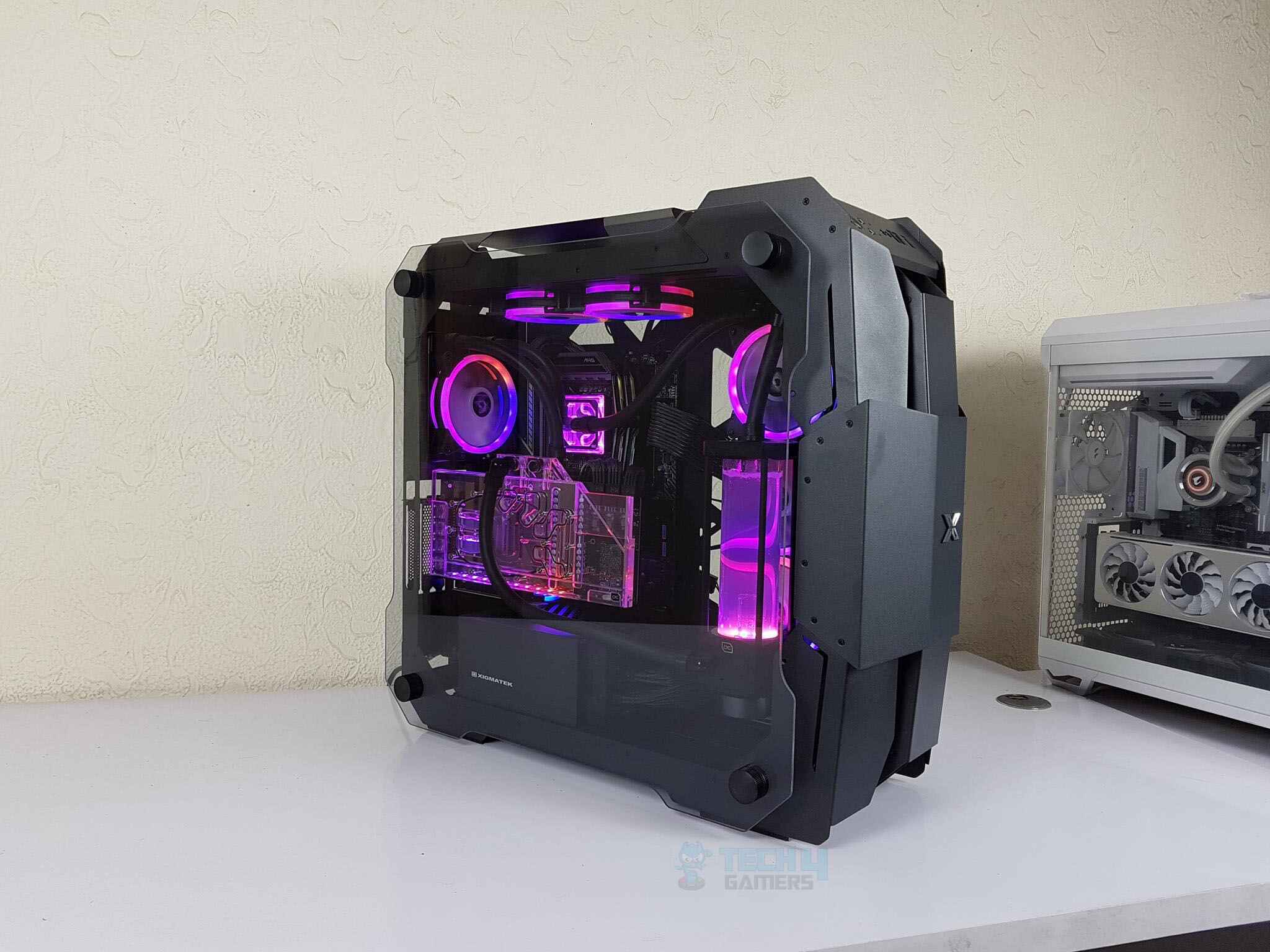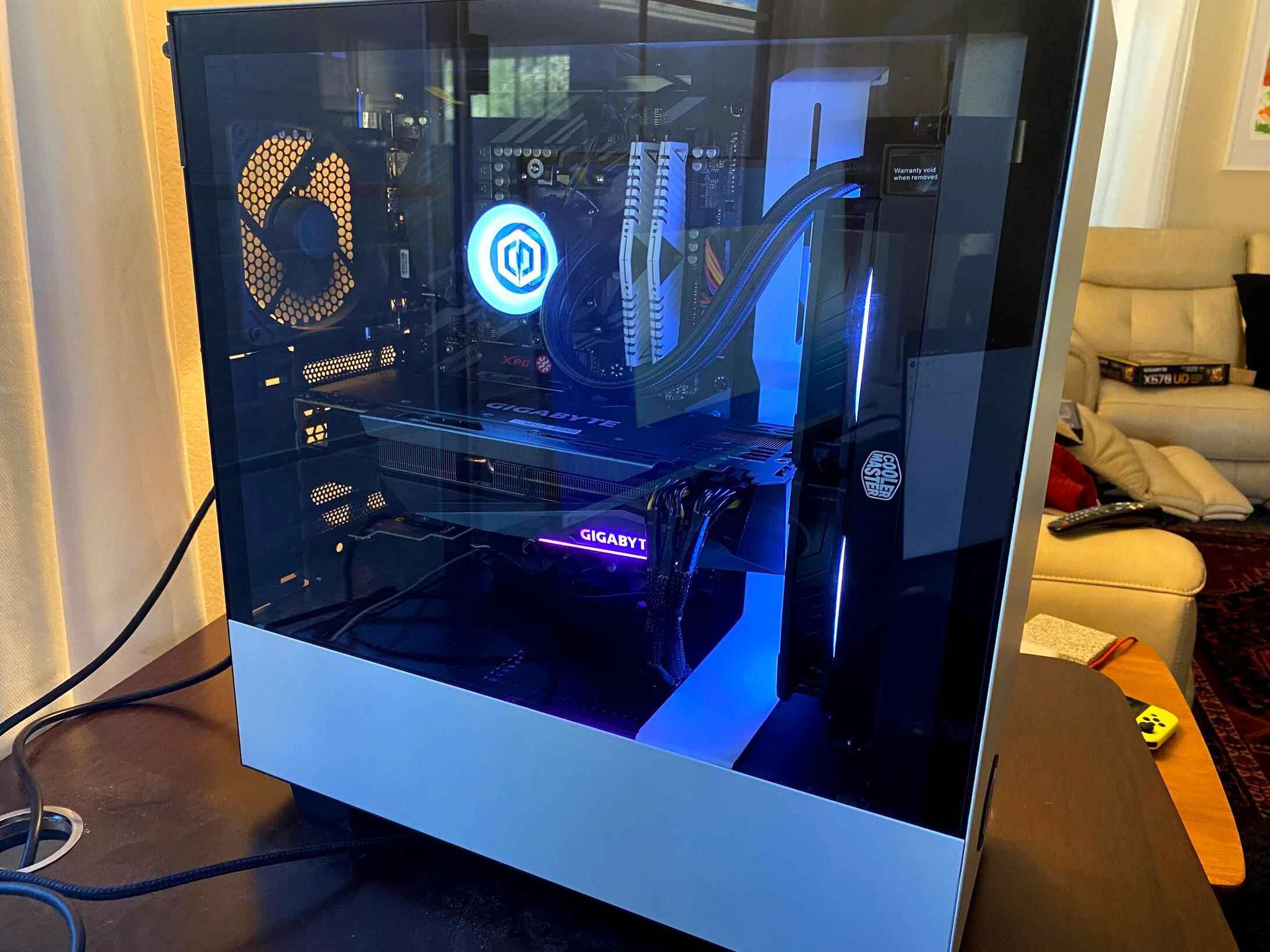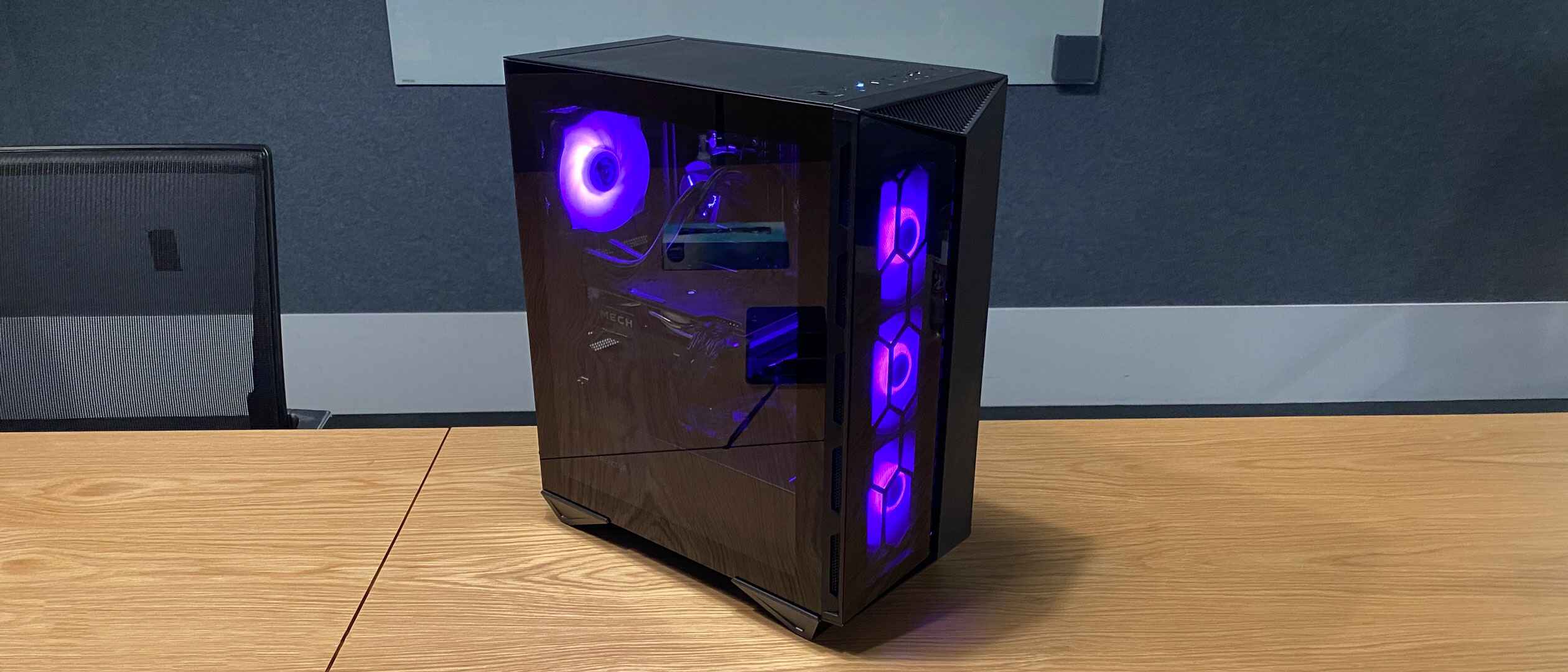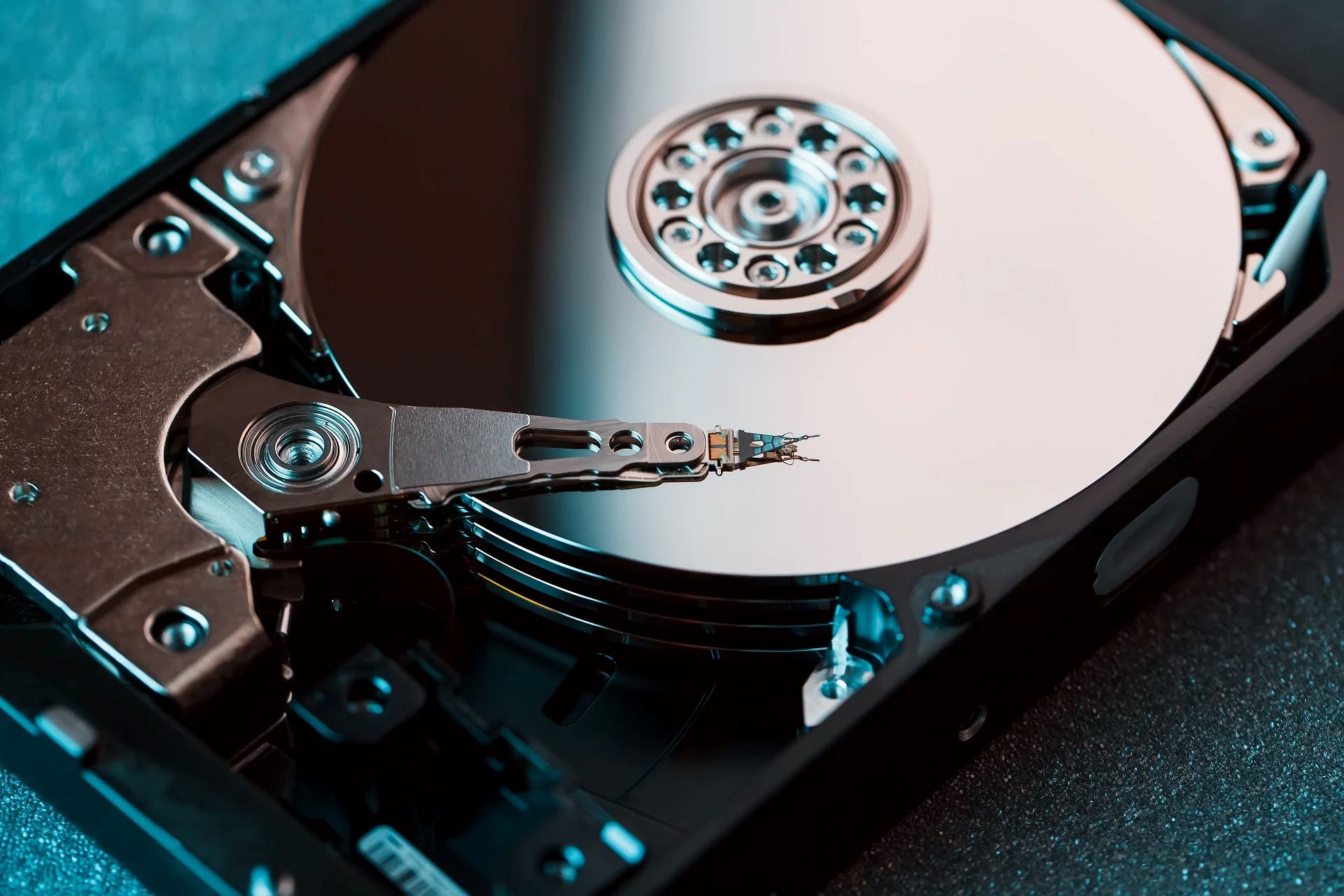Introduction
Welcome to our comprehensive guide on how to wipe a PC. Whether you’re looking to sell your computer, donate it, or simply start fresh, wiping your PC ensures that your personal data is properly erased and your device is ready for its next user. With the multitude of sensitive information stored on our computers, such as personal documents, financial records, and login credentials, it is crucial to take the necessary steps in securely wiping your PC.
In this article, we will walk you through the process of preparing for a PC wipe, backing up your data, creating a Windows installation media, wiping your PC, reinstalling Windows, and restoring your backed-up data. We will also provide valuable tips for securing your newly wiped PC to protect your privacy moving forward.
Performing a PC wipe may seem daunting if you’ve never done it before, but fear not! With our step-by-step instructions and helpful tips, you’ll have the knowledge and confidence to safely and effectively wipe your PC. So, let’s get started on this transformative journey for your computer!
Before we dive into the nitty-gritty details, it’s important to note that wiping your PC means permanently erasing all data on your hard drive. Therefore, it is crucial to back up any important data to avoid losing it during the process. Remember to save your essential files, photos, videos, and any other data you want to keep before proceeding.
After you’ve backed up your data, we’ll guide you through creating a Windows installation media. This will enable you to reinstall Windows on your freshly wiped PC, giving it a clean and optimized operating system. Now, let’s get into the specific steps for wiping your PC and reinstalling Windows.
How to Prepare for PC Wipe
Before diving into the process of wiping your PC, it is essential to take the necessary steps to prepare for the procedure. The preparation phase ensures that you have everything you need and that your data is safely backed up. Follow these steps to ensure a smooth PC wipe:
1. Backup your data: As mentioned earlier, backing up your data is crucial before proceeding with the PC wipe. There are several methods to back up your data, such as using an external hard drive, cloud storage services, or even burning data to DVDs. Make sure to create a comprehensive backup of all your important files, folders, and documents. It’s better to be safe than sorry!
2. Make a list of installed programs and licenses: Before wiping your PC, create a record of all the software you have installed. Note down the names of the programs, as well as any licenses or product keys associated with them. This will make it easier for you to reinstall and activate your software after the PC wipe.
3. Deauthorize your PC: If you have any software or applications that require authorization or activation on your computer, ensure that you deauthorize your PC before wiping it. This will prevent any complications or issues when you reinstall and activate the software on your freshly wiped PC.
4. Gather necessary installation media: Depending on your computer’s manufacturer and model, you may require specific installation media to reinstall the operating system. Check the manufacturer’s support website to find out if you need a specific installation disc or if you can create a Windows installation USB drive. Ensure that you have the necessary installation media ready before proceeding with the PC wipe.
5. Save essential drivers: Drivers are essential software components that allow your computer’s hardware to communicate with the operating system. It’s a good practice to save the latest versions of your computer’s drivers on a separate storage device. This will make it easier to reinstall the necessary drivers after the PC wipe.
By following these preparatory steps, you’ll be well-equipped and ready to perform a successful PC wipe. Remember, taking the time to properly prepare will ensure a smoother and more efficient process, minimizing the risk of data loss or complications during the wipe.
Backing Up Your Data
Before you proceed with wiping your PC, it is crucial to back up your data. This step ensures that none of your important files or documents are lost during the process. Follow these steps to back up your data:
1. Identify important data: Take some time to go through your computer and identify the important files and folders that you want to back up. This includes documents, photos, videos, music, and any other files that hold significant value to you.
2. Choose a backup method: There are several backup methods to choose from, depending on your preferences and available resources. You can use an external hard drive, cloud storage services, or even burn your data onto DVDs or CDs. Consider the size of your data and the ease of accessing it when selecting a backup method.
3. External hard drive: If you have a large amount of data to back up, using an external hard drive is a convenient option. Connect the external hard drive to your computer and simply copy and paste your important files and folders onto the drive. Make sure to organize your data in a way that it’s easy to locate later.
4. Cloud storage services: Cloud storage services like Google Drive, Dropbox, or OneDrive offer an efficient way to back up your data. Create an account with your preferred cloud storage provider and upload your important files and folders to their servers. This ensures that your data is accessible from any device with an internet connection.
5. Burn data to DVDs or CDs: If you have a smaller amount of data, you can choose to burn it onto DVDs or CDs. Make sure your computer has a DVD or CD burner drive and insert a blank disc. Use a disc burning software to create a data disc and follow the instructions to add your important files and folders. Label the disc for easy identification.
6. Verify your backup: After you have backed up your data, it’s important to verify that the backup was successful. Double-check that all your files and folders are present and accessible in the backup location or storage device. It’s better to be safe than sorry!
Remember, backing up your data is a crucial step before wiping your PC. It ensures that you have a copy of your important files in case anything goes wrong during the PC wipe process. Take the time to carefully back up your data, and you’ll have peace of mind knowing that your valuable files are secure.
Creating a Windows Installation Media
Before you can proceed with wiping your PC and reinstalling Windows, you will need to create a Windows installation media. This will allow you to perform a fresh installation of the operating system. Follow these steps to create a Windows installation media:
1. Check your system requirements: Before creating a Windows installation media, ensure that your computer meets the system requirements for the version of Windows you want to install. Check the official Microsoft website for the specific requirements.
2. Obtain a blank USB drive or DVD: Depending on your computer’s specifications and your personal preference, you will need either a USB drive or a DVD to create the installation media. Make sure the USB drive or DVD is blank and has enough storage capacity to hold the Windows installation files.
3. Download the Windows Media Creation Tool: Visit the official Microsoft website and download the Windows Media Creation Tool. This tool allows you to create a bootable USB drive or a DVD with the Windows installation files.
4. Run the Windows Media Creation Tool: Once the tool is downloaded, run it on your computer. Follow the on-screen instructions to select the version of Windows you want to download and create the installation media for.
5. Choose the USB drive or DVD: When prompted, choose whether you want to create a bootable USB drive or a DVD. Select the appropriate option based on the storage device you prepared in step 2.
6. Wait for the Windows installation files to be downloaded: The Windows Media Creation Tool will begin downloading the necessary files for the installation media. This may take some time, depending on your internet connection speed.
7. Create the Windows installation media: Once the download is complete, the Windows Media Creation Tool will begin creating the bootable USB drive or DVD using the downloaded files. Make sure to follow the on-screen instructions and be patient as the process completes.
8. Verify the Windows installation media: After the creation process is finished, it’s a good practice to verify the integrity of the Windows installation media. You can do this by comparing the checksum or checking for any errors or inconsistencies on the USB drive or DVD.
With the Windows installation media created, you are now ready to proceed with wiping your PC and reinstalling Windows. This media ensures that you have a reliable and legitimate source for installing the operating system on your freshly wiped computer. Store the installation media in a safe place, as you may need it in the future for system recovery or reinstallation purposes.
How to Wipe Your PC
Now that you have backed up your data and created a Windows installation media, it’s time to learn how to wipe your PC. Follow these steps to ensure a successful PC wipe:
1. Boot from the Windows installation media: Insert the USB drive or DVD containing the Windows installation media into your PC. Restart your computer and access the boot menu by pressing the appropriate key (usually F12, F11, or Esc) during startup. Choose the option to boot from the installation media.
2. Choose language, time, and keyboard settings: Once you have booted from the installation media, you will be presented with a language selection screen. Choose your preferred language, time format, and keyboard layout, then click “Next” to proceed.
3. Select “Custom (advanced) installation: On the next screen, you will be asked to choose the type of installation. Select “Custom (advanced)” to perform a clean installation and wipe your PC.
4. Delete existing partitions: You will now see a list of partitions on your hard drive. Select each partition one by one and click “Delete” to remove them. This will erase all data on the partitions.
5. Create new partitions: Once all partitions are deleted, you will see unallocated space on your hard drive. Select the unallocated space and click “New” to create a new partition. Set the desired size for the partition, or use the maximum available space, and click “Apply” to create the partition.
6. Repeat step 5 if necessary: If you want to create multiple partitions on your hard drive, repeat step 5 for each desired partition, allocating the desired size to each one.
7. Select the partition to install Windows: Once you have created the necessary partitions, select the partition where you want to install Windows. Click “Next” to start the installation process.
8. Follow the on-screen instructions: The Windows installation process will now begin. Follow the on-screen instructions to configure your settings, such as choosing a username and password, connecting to a network, and customizing privacy settings. Allow the installation process to complete.
9. Install drivers and necessary software: After Windows is installed, you will need to install drivers for your hardware components, such as graphics cards, sound cards, and printers. Refer to the documentation provided with your computer or visit the manufacturer’s website to download and install the latest drivers. Additionally, reinstall any necessary software and applications.
By following these steps, you will successfully wipe your PC and perform a clean installation of Windows. Remember to double-check your data backups and make sure you have all the necessary drivers and software ready before proceeding. A fresh, clean PC awaits you after completing this process.
Reinstalling Windows
After wiping your PC, the next step is to reinstall Windows. This involves using the Windows installation media you created earlier to perform a fresh installation of the operating system. Follow these steps to reinstall Windows:
1. Boot from the Windows installation media: Insert the USB drive or DVD containing the Windows installation media into your PC. Restart your computer and access the boot menu by pressing the appropriate key (usually F12, F11, or Esc) during startup. Choose the option to boot from the installation media.
2. Choose language, time, and keyboard settings: Once you have booted from the installation media, select your preferred language, time format, and keyboard layout. Click “Next” to proceed.
3. Click “Install Now”: On the next screen, click “Install Now” to begin the installation process.
4. Enter the product key: If prompted, enter the product key for your copy of Windows. This is usually found on a sticker attached to your computer or in the documentation provided with your Windows installation media. Click “Next” to continue.
5. Accept the license terms: Read and accept the license terms and conditions for using Windows. Click “Next” to proceed.
6. Choose installation type: Select the type of installation you want to perform. If you want to install Windows in the same partition where it was previously installed, choose the “Upgrade” option. If you want to perform a completely clean installation and have already wiped your PC, select the “Custom (advanced)” option.
7. Select the installation location: If you chose the “Custom (advanced)” installation type, select the partition where you want to install Windows. Click “Next” to start the installation process. If you want to create or modify partitions, you can do so by clicking the “New” or “Drive options” buttons, respectively.
8. Wait for the installation to complete: Windows will now install on your computer. The installation process might take some time, so be patient and avoid interrupting the process.
9. Set up your computer: After the installation is complete, follow the on-screen instructions to set up your computer. This includes selecting your region, entering a username and password, choosing privacy settings, and connecting to a network.
10. Update Windows: Once you have completed the setup, it is essential to update Windows with the latest security patches and updates. Go to the Windows Update settings and check for updates. Install any available updates to ensure your computer is up to date.
By following these steps, you will be able to reinstall Windows on your newly wiped PC. Remember to have your product key ready, choose the appropriate installation type, and carefully follow the on-screen instructions. A fresh installation of Windows will provide optimized performance and a clean start for your PC.
Restoring Your Backed-Up Data
After successfully reinstalling Windows on your PC, it’s time to restore your backed-up data. This step ensures that your important files, documents, and personal information are transferred back to your computer. Follow these steps to restore your backed-up data:
1. Connect your external storage device: If you backed up your data onto an external hard drive, connect the device to your PC. If you used a cloud storage service or burned your data onto DVDs or CDs, make sure you have access to those as well.
2. Access your backup files: Navigate to your backup location, whether it’s the external hard drive, cloud storage, or DVDs/CDs. Locate the folders or files you want to restore.
3. Copy the files to your computer: Select the files and folders you want to restore and copy them to your computer’s hard drive. You can either drag and drop them or right-click and choose the “Copy” option, then navigate to your desired location on your PC and right-click again to choose “Paste.”
4. Organize your restored files: Take some time to organize your restored files and folders on your computer. Create new folders if needed and organize the files in a logical and easily accessible manner.
5. Verify the integrity of your restored data: After restoring your data, it’s crucial to verify its integrity. Open the restored files and ensure that they are accessible and not corrupted. Check that all the important data and files you backed up are present and functioning correctly.
6. Install applications and software: If you backed up any software or applications, it’s time to reinstall them. Use the previously saved installation files or discs and follow the appropriate installation procedures for each application.
7. Set up email and other accounts: If you use email or other accounts on your PC, set them up again after the restore process. Enter the necessary login information and configure your account settings according to your preferences.
8. Test your restored data and applications: After restoring your data and reinstalling applications, make sure to test everything thoroughly. Open documents and files, run applications, and check for any errors or issues. This will ensure that everything is working as expected.
By following these steps, you will successfully restore your backed-up data onto your newly installed Windows. Take the time to organize your files and test everything to ensure a smooth transition and that all your important data is back where it belongs.
Tips for Securing Your Newly Wiped PC
After wiping and reinstalling Windows on your PC, it’s important to take steps to secure your newly cleaned system. By implementing these security measures, you can protect your personal information and safeguard your computer from potential threats. Here are some essential tips:
1. Install a reliable antivirus software: Protect your PC from malware and viruses by installing a reputable antivirus program. Ensure that it is up to date and set it to perform regular scans and updates.
2. Enable Windows Firewall: Windows Firewall is your first line of defense against unauthorized access to your PC. Make sure it is enabled to prevent unauthorized connections and protect your system.
3. Keep Windows and applications up to date: Regularly update Windows and installed applications to patch any vulnerabilities. Enable automatic updates or regularly check for updates to ensure you have the latest security patches.
4. Enable Windows Defender: Windows Defender is an in-built security feature of Windows that provides real-time protection against malware and other threats. Ensure that it is enabled to enhance your PC’s security.
5. Create strong, unique passwords: Use strong and unique passwords for all your online accounts and ensure you have a secure password manager to store them. This prevents unauthorized access to your accounts and personal information.
6. Enable two-factor authentication (2FA): Whenever possible, enable two-factor authentication for your online accounts. This adds an extra layer of security by requiring a second verification factor, such as a code sent to your mobile device, in addition to your password.
7. Be cautious of suspicious emails and downloads: Exercise caution when opening email attachments or downloading files from the internet. Be wary of phishing attempts and only download files from trusted sources.
8. Use a virtual private network (VPN): Consider using a VPN to encrypt your internet connection, especially when connected to public Wi-Fi networks. This helps protect your data from potential eavesdropping and unauthorized access.
9. Regularly back up your data: Don’t forget to continue backing up your data regularly on an external hard drive or cloud storage. This ensures that your data is protected and can be easily recovered in case of any unforeseen events.
10. Stay vigilant and educate yourself: Stay updated on the latest security threats, scams, and best practices. Educate yourself about online safety and be cautious while browsing, downloading, and sharing information online.
Implementing these security measures will go a long way in safeguarding your newly wiped PC. By staying proactive and vigilant, you can enjoy a secure and worry-free computing experience.
Conclusion
Congratulations! You have successfully learned how to wipe your PC and reinstall Windows. By following the steps outlined in this guide, you have ensured that your personal data is securely erased and your computer is ready for its next purpose. Wiping a PC can be a daunting task, but by following the right procedures and taking the necessary precautions, you can confidently accomplish this task.
Remember, before wiping your PC, always back up your important data to avoid any potential loss. Creating a Windows installation media is crucial in order to reinstall the operating system on your freshly wiped PC. Following proper backup and installation techniques, combined with implementing security measures, will help you maintain your privacy and protect your newly wiped PC from potential threats.
Once you have successfully wiped and reinstalled Windows, take the time to set up a strong line of defense. Install reliable antivirus software, enable Windows Firewall and Windows Defender, and keep your operating system and applications up to date. This ensures that your PC remains protected against malware and potential security vulnerabilities.
Additionally, practicing good password management, being cautious of suspicious emails and downloads, and considering the use of a VPN further enhance the security and privacy of your newly wiped PC. Continuously backing up your data will also provide peace of mind and a safety net in case of any unforeseen events.
Now that you have equipped yourself with the knowledge and steps to wipe and reinstall Windows, you can confidently tackle this process whenever the need arises. Enjoy the fresh start and optimized performance of your newly wiped PC!







